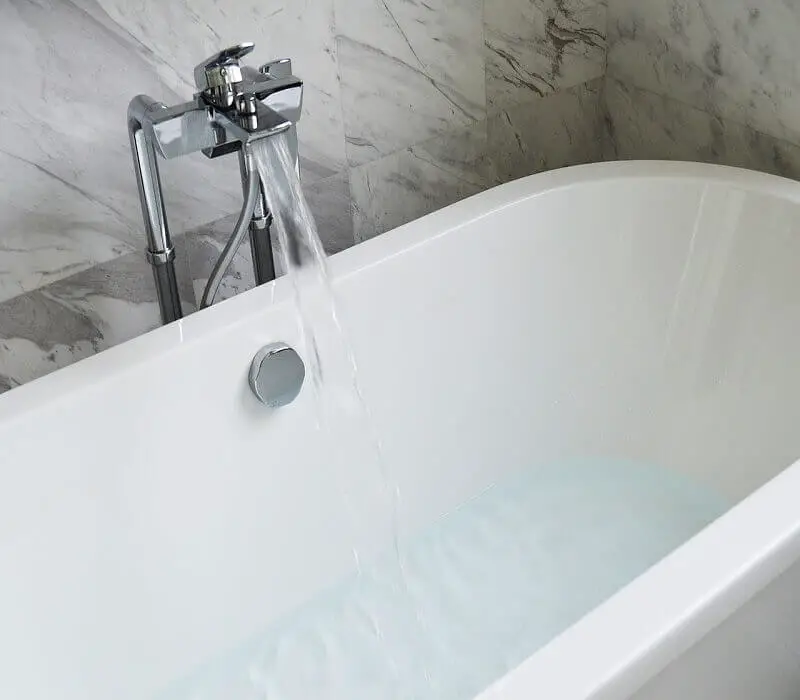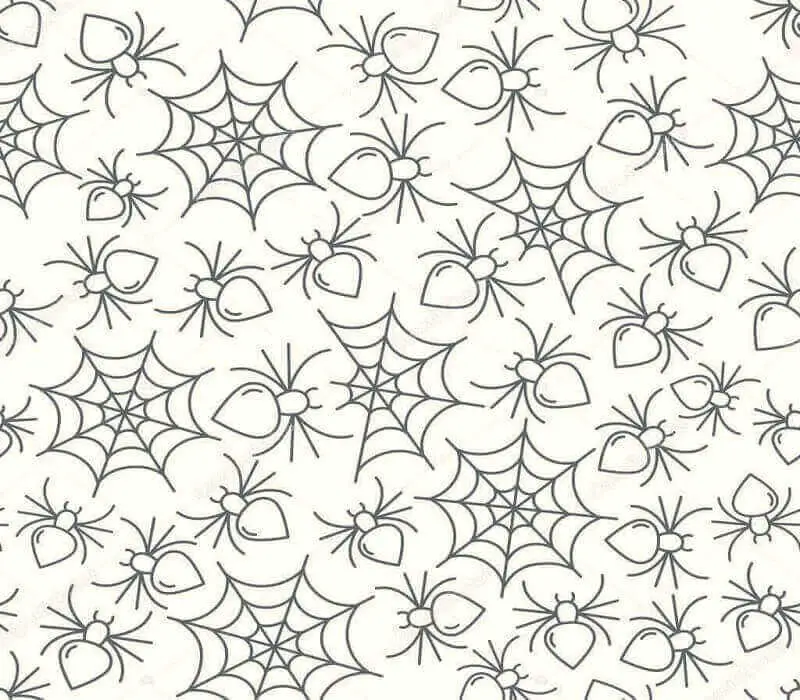Orange mold in shower and bathroom is a type of mold that commonly grows in damp and humid environments, like showers and bathrooms. It is usually caused by a type of bacteria called Serratia marcescens and can appear as small, orange or pink spots on surfaces. It can cause a musty odor and is known to cause infections in some individuals with weakened immune systems. It can be removed by using a bleach solution or a commercial mold and mildew cleaner. Preventing it requires keeping the bathroom dry and well-ventilated.

What Orange Mold Looks Like
Orange mold is a type of mold that can grow on various surfaces, including food, walls, and damp areas. It typically appears as a fuzzy or powdery growth with a distinct orange color. Here are some common characteristics of orange mold:
- Color: As the name suggests, orange mold exhibits a vibrant orange hue. The color can range from a light orange to a deep, almost reddish-orange shade.
- Texture: Orange mold often has a fuzzy or velvety texture. It may appear powdery or cotton-like, depending on the stage of growth and the specific type of mold.
- Shape and Structure: Orange mold can take on various forms and structures. It may form patches or colonies that spread over the surface, resembling irregularly shaped spots or clumps. The mold can grow vertically or horizontally, depending on the conditions.
- Moisture and Location: Orange mold tends to thrive in damp or humid environments. It is commonly found in areas with water damage, such as bathrooms, basements, and kitchens. It can also grow on decaying organic matter, including fruits, vegetables, and other food items.
- Odor: In some cases, orange mold may produce a musty or earthy odor. However, the smell can vary depending on the type of mold and the materials it is growing on.
It is important to note that mold identification can be challenging without professional testing, as there are numerous species of mold with varying colors and appearances. If you suspect the presence of mold in your living space or on food, it is advisable to consult with a mold remediation specialist or a professional in the field to accurately identify and address the issue.
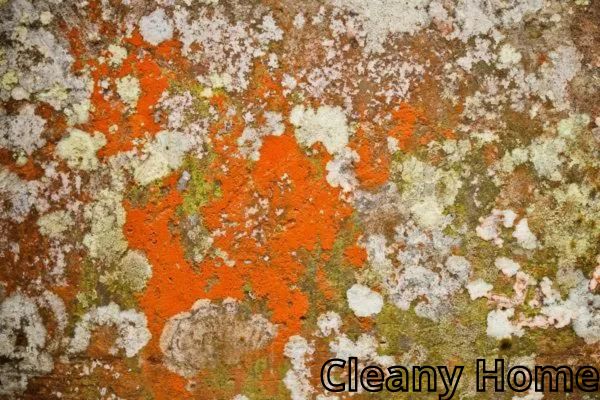
Reasons for Orange Mold
Orange mold can grow in many different environments and under various conditions. Some of the common reasons for the growth of orange mold include:
- Moisture: Orange mold thrives in moist environments. If there is moisture in your home, such as in a damp basement or bathroom, orange mold can quickly grow.
- Lack of ventilation: Poor ventilation can cause humidity to build up in a room, leading to the growth of mold.
- Food sources: Orange mold can feed on a variety of materials, including wood, paper, and other organic materials. If there is food available, mold can grow and spread quickly.
- Warm temperatures: Orange mold prefers warm temperatures, which is why it is commonly found in tropical or subtropical climates.
- Poor cleaning habits: If surfaces are not regularly cleaned and disinfected, mold can grow and spread.
- Water damage: Any type of water damage in your home, such as from a leaky roof or a burst pipe, can create the perfect environment for mold growth.
- Poor ventilation in bathrooms: Bathrooms with inadequate ventilation can create the ideal conditions for mold growth, especially in areas with high humidity, such as showers and tubs.

Threats of Orange Mold in Shower
Mold is a type of fungus that grows in damp and humid environments. Bathrooms, and especially showers, provide an ideal environment for mold growth due to the presence of moisture and warmth. Here are some of the potential threats of mold in a shower:

- Health risks: Exposure to mold can cause respiratory problems, allergies, and other health issues. People with weakened immune systems or pre-existing respiratory conditions are particularly susceptible to the harmful effects of mold.
- Structural damage: Mold can cause structural damage to a shower if left untreated. Over time, it can weaken and deteriorate the grout, tiles, and other materials in the shower, leading to expensive repairs.
- Unsightly appearance: Mold growth in a shower can be unsightly and make the entire bathroom look dirty and unhygienic.
- Foul odor: Mold produces a musty odor that can be unpleasant and difficult to eliminate. Even after the mold is removed, the odor may linger.
To prevent the threats of mold in a shower, it’s important to keep the area clean, dry, and well-ventilated. Regular cleaning with a mold-killing solution can help prevent mold growth, as can using a dehumidifier or exhaust fan to reduce moisture in the bathroom. If you do notice mold in your shower, it’s important to address it promptly to prevent further damage and health risks.
Staining by Mold in Bathroom
Mold is a common problem in bathrooms, especially in areas that are damp and humid. Staining caused by mold can be unsightly and difficult to remove, but there are steps you can take to get rid of it.
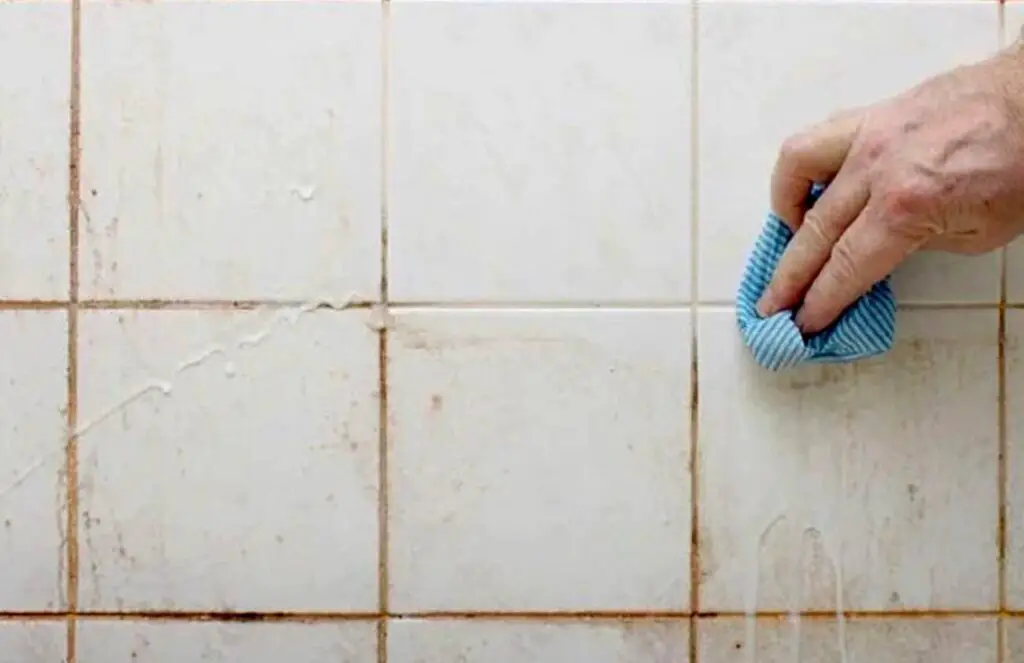
Here are some tips for removing mold stains in the bathroom:
- Use a mold and mildew remover: There are many products on the market that are specifically designed to remove mold and mildew stains. Look for one that is safe for use on the surface you want to clean (e.g. tile, grout, etc.) and follow the instructions carefully.
- Try a natural solution: If you prefer to use natural cleaning solutions, you can mix equal parts white vinegar and water in a spray bottle and apply it to the affected area. Let it sit for 30 minutes, then scrub the area with a brush or sponge and rinse with water.
- Use bleach as a last resort: If the mold stains are particularly stubborn, you can try using bleach. Mix one part bleach with three parts water and apply it to the affected area with a spray bottle or sponge. Be sure to wear gloves and open windows for ventilation, as bleach can be harsh and emit fumes. Rinse thoroughly with water.
- Prevent future mold growth: To prevent mold from growing in the future, make sure your bathroom is well-ventilated by opening windows or using an exhaust fan. Wipe down surfaces regularly with a towel or squeegee after showering to prevent moisture buildup, and consider using a dehumidifier to reduce humidity levels.
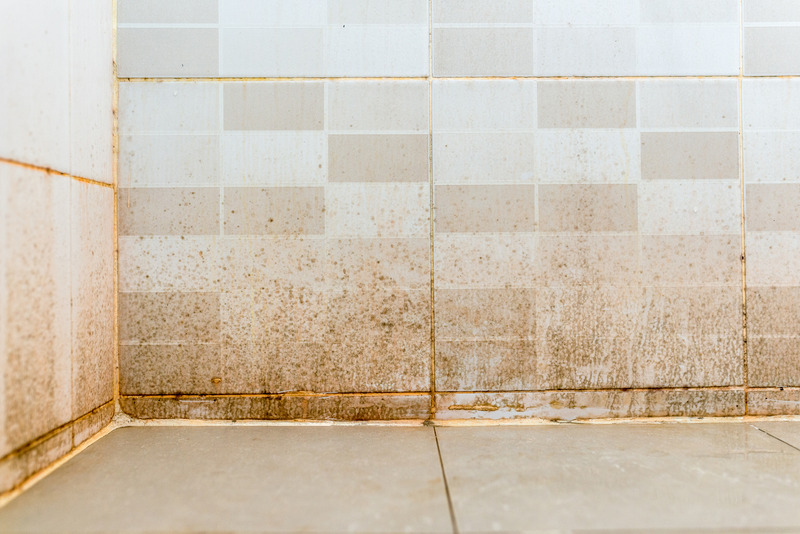
Staining From Iron
Staining from iron can be a common problem in households with well water or old plumbing systems. These stains can be unsightly and difficult to remove, but there are several methods you can try to get rid of them.
Here are some tips for removing staining from iron:
- Use a commercial iron stain remover: There are many products available on the market that are designed to remove iron stains from various surfaces. These products typically contain acid-based formulas that can dissolve the iron and remove the stain. Be sure to follow the instructions carefully and wear gloves to protect your skin.
- Try a natural solution: If you prefer to use natural solutions, you can make a paste by mixing baking soda and water and apply it to the affected area. Let it sit for a few minutes, then scrub the area with a brush or sponge and rinse with water. You can also try using lemon juice or vinegar, as both contain acid that can help dissolve the iron.
- Use a pumice stone: A pumice stone can be an effective tool for removing iron stains from toilets and other hard surfaces. Wet the stone and gently rub it over the stain, being careful not to scratch the surface.
- Prevent future staining: To prevent future staining from iron, consider installing a water softener or iron filter in your home’s plumbing system. These systems can help remove minerals and other impurities from the water, reducing the likelihood of staining. Additionally, try to avoid leaving standing water in sinks or toilets for long periods, as this can contribute to staining.
Get rid of mold and mildew from the shower stall
Mold and mildew can be common problems in shower stalls, which are often damp and humid. To get rid of mold and mildew from your shower stall, here are some tips:
- Use a mold and mildew remover: There are many products on the market that are specifically designed to remove mold and mildew stains. Look for one that is safe for use on the surface you want to clean (e.g. tile, grout, etc.) and follow the instructions carefully.
- Make a natural solution: If you prefer to use natural cleaning solutions, you can mix equal parts white vinegar and water in a spray bottle and apply it to the affected area. Let it sit for 30 minutes, then scrub the area with a brush or sponge and rinse with water. Alternatively, you can make a paste by mixing baking soda and water and apply it to the moldy areas. Let it sit for a few minutes, then scrub and rinse with water.
- Scrub with a brush or sponge: Use a scrub brush or sponge to scrub away the mold and mildew. Be sure to scrub thoroughly and get into all the nooks and crannies of the shower stall.
- Rinse with water: Once you have scrubbed the mold and mildew away, rinse the shower stall thoroughly with water. Use a showerhead or a bucket to rinse the entire area, including corners and edges.
- Prevent future mold growth: To prevent mold and mildew from growing in the future, make sure your bathroom is well-ventilated by opening windows or using an exhaust fan. Wipe down surfaces regularly with a towel or squeegee after showering to prevent moisture buildup, and consider using a dehumidifier to reduce humidity levels.
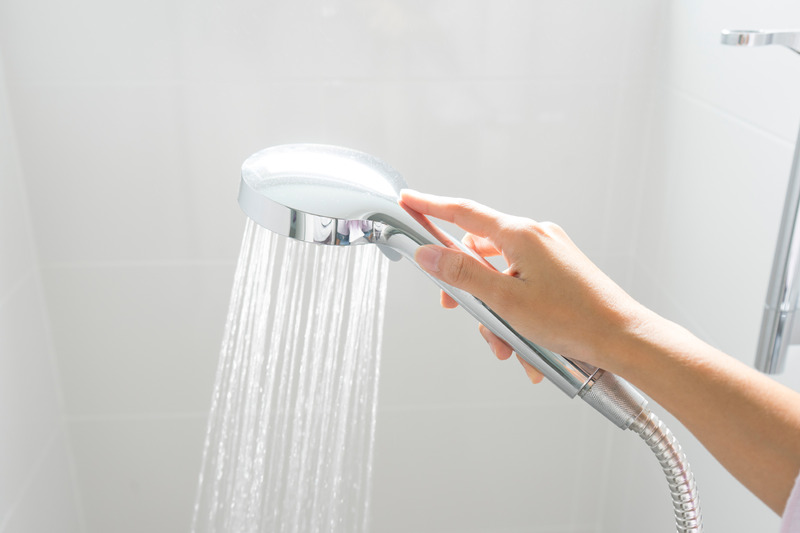
Keep mold and mildew from returning
Preventing mold and mildew from returning in your shower stall can be challenging, but there are some steps you can take to keep your bathroom clean and dry. Here are some tips to prevent mold and mildew from returning:
- Ventilate your bathroom: Proper ventilation is essential for preventing mold and mildew growth in your bathroom. Use an exhaust fan or open windows to circulate the air and reduce humidity levels.
- Wipe down surfaces: After using the shower, wipe down the walls, doors, and fixtures with a towel or squeegee to remove excess moisture. This will help prevent mold and mildew from growing on the surfaces.
- Use a shower curtain liner: A shower curtain liner can help prevent water from getting onto the bathroom floor and causing mold and mildew to grow. Be sure to clean the liner regularly to prevent mold and mildew from growing on it.
- Keep the bathroom dry: Make sure your bathroom is as dry as possible. Use a dehumidifier to remove excess moisture from the air, and fix any leaks or drips in your plumbing to prevent water from accumulating in your bathroom.
- Clean regularly: Regular cleaning is essential for preventing mold and mildew growth in your bathroom. Use a mold and mildew cleaner to clean your shower stall, and be sure to clean other surfaces in your bathroom regularly as well.
By following these tips, you can keep your bathroom clean and dry, and prevent mold and mildew from returning in your shower stall.
Conclusion
If you suspect that you have orange mold in your home, it is essential to address the underlying cause and take steps to prevent further growth. This may include improving ventilation, fixing any leaks, and regularly cleaning and disinfecting surfaces. The difficulty of removing orange mold can vary depending on various factors such as the surface it is growing on, the extent of the growth, and the cause of the mold. In general, it may be more difficult to remove orange mold from porous materials such as wood, while it may be easier to remove it from non-porous surfaces such as tile or metal. It is important to wear protective gear and use the appropriate cleaning solution to remove mold effectively. And also we recommend you to use some tips how to clean plastic shower floor and walls.
Is orange mold harmful?
Orange mold can be harmful if it is a type of toxic mold, such as Stachybotrys chartarum. However, not all orange mold is toxic, and it may not be harmful in small quantities. It’s always best to err on the side of caution and have it properly identified and removed if it’s growing in your home.
How do you get rid of orange shower mold?
To get rid of orange shower mold, you can use a mixture of equal parts water and white vinegar or hydrogen peroxide. Spray the solution on the affected area and let it sit for at least 10-15 minutes before scrubbing with a brush or sponge. Rinse the area with water and dry it thoroughly. You can also use a commercial mold and mildew cleaner, but be sure to follow the instructions carefully and use proper ventilation.
Why is there orange mold in my shower?
Orange mold can grow in your shower due to the high humidity and moisture levels. The most common type of orange mold found in showers is Aspergillus, which thrives in warm, damp environments. Other factors that can contribute to mold growth in showers include poor ventilation, insufficient cleaning, and a buildup of soap scum or other organic material. It’s important to address the underlying causes of mold growth and take steps to prevent it from returning.
Does hard water cause an orange residue?
Yes, hard water can cause an orange residue to form on surfaces such as shower walls and faucets. This is due to the presence of minerals, such as iron and manganese, which can react with the soap and water to form a reddish-brown or orange stain.
What is the orange stuff on water?
The orange stuff on water can be caused by a variety of factors, including high levels of iron, manganese, or tannins. In some cases, it may be caused by algae or bacteria growth. The specific cause of the orange stuff can vary depending on the source of the water and the local environment.
We're an affiliate
We hope you love the products we recommend! Just so you know, CleanyHome.com is a participant in the Amazon Services LLC Associates Program, an affiliate advertising program designed to provide a means for sites to earn advertising fees by linking to Amazon.com.

